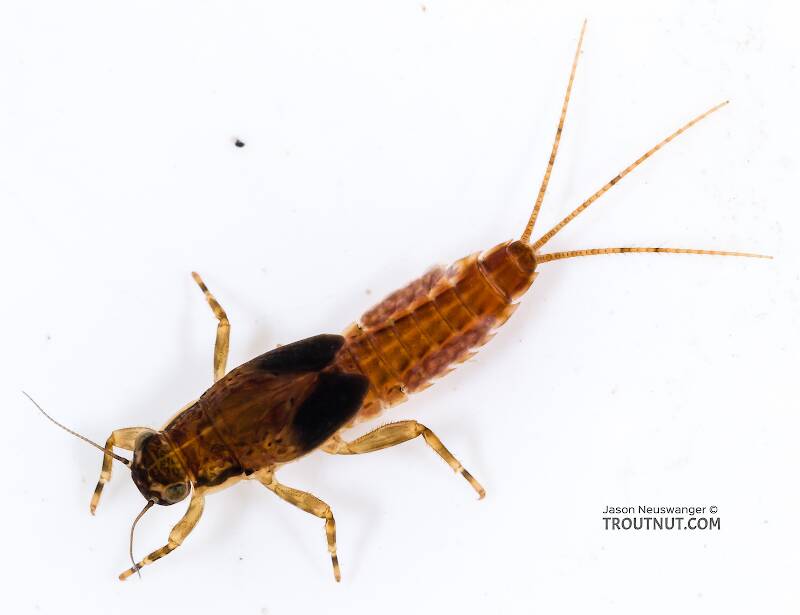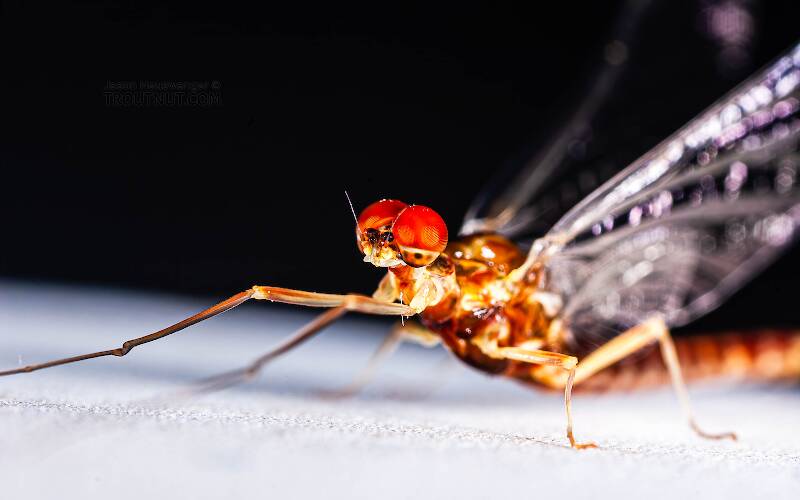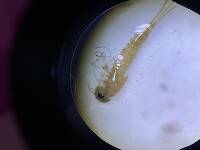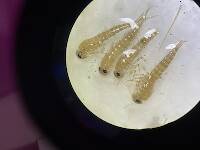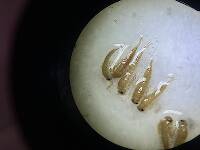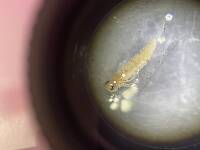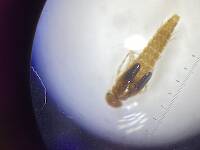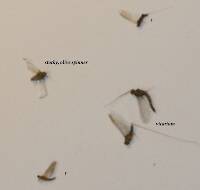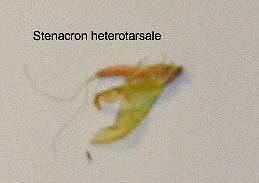
Salmonflies
Pteronarcys californica
The giant Salmonflies of the Western mountains are legendary for their proclivity to elicit consistent dry-fly action and ferocious strikes.
Featured on the forum

Troutnut is a project started in 2003 by salmonid ecologist Jason "Troutnut" Neuswanger to help anglers and
fly tyers unabashedly embrace the entomological side of the sport. Learn more about Troutnut or
support the project for an enhanced experience here.
This topic is about the Mayfly Genus Ephemerella
This genus contains the legendary Hendricksons and Sulphurs of the East and the equally important Pale Morning Duns of western waters.No scientific name in American angling literature is more renowned and at the same time capable of more confusion than the genus name "Ephemerella." It is important that anglers have a good overall grasp of its taxonomic history if they are to make any sense out of the rich literary heritage involving this mayfly name.
By the time American angling literature began to take serious note of entomology in the decades of the early to mid 20th century, Ephemerella was considered a "super-genus" in the family Baetidae, containing all of the important species to anglers in the subfamily Ephemerellinae. Taxonomists organized them by association with "type" species that were referred to as "groups" within this very large and unruly genus.
This organizational structure held sway until the 70's when they were recognized as separate from the Baetidae with their own family, the Ephemerellidae. The "groups" (after a little name changing and reorganization) were given subgenus status, but in conformance with taxonomical convention,the nomenclature retained the use of the name Ephemerella when referring to individual species genus status. More change occurred towards the end of the century as consensus formed around the subgenera achieving full generic status. The broad use of Ephemerella was then dropped in favor of the new generic names.
These changes were necessary in that they addressed many problems exposed in older taxonomies. Unfortunately, all during this period the changes were reported with varying degrees of accuracy and acceptance. For anglers this was exacerbated by the continued use and reliance on older entomology texts in many circles. Be that as it may, recent or updated angler entomologies now recognize that many of the old Ephemerella species are spread out among several genera in the Ephemerellidae family. These include the various Blue-Winged Olives and Western Green Drakes of the Drunella genus as well as several important species scattered in genera like Attenella and Serratella, to name a few.
Despite these revisions in classification, the Ephemerella genus still contains arguably the most important species in North America, and remains a "super-genus" to anglers.
There is a lot of variation; refer to the genus species hatch pages for details.
Example specimens
Jpsully on May 23, 2008May 23rd, 2008, 1:22 am EDT
Hey Jason:
There are some beautiful photos posted on that forum under the "Fishing" section, and titled "Bugs are cool". My guesses as to ID are: first 2 pics (same fly)- Stenacron (orange tint, two tails, mottled wing and banded femur), third pic - Ephemerella Attenella (3 tails, slate wings and faded olive body), last 2 pics (same fly) would appear to be Maccafertium (Grey Fox - not March Brown) based on 2 tails and light coloration. Am I correct in my assumptions? Any help you could provide would be appreciated. Thanks.
JPSully
There are some beautiful photos posted on that forum under the "Fishing" section, and titled "Bugs are cool". My guesses as to ID are: first 2 pics (same fly)- Stenacron (orange tint, two tails, mottled wing and banded femur), third pic - Ephemerella Attenella (3 tails, slate wings and faded olive body), last 2 pics (same fly) would appear to be Maccafertium (Grey Fox - not March Brown) based on 2 tails and light coloration. Am I correct in my assumptions? Any help you could provide would be appreciated. Thanks.
JPSully
GONZO on May 23, 2008May 23rd, 2008, 2:17 am EDT
JP,
Just in case you'd like another (unsolicited) opinion while you're waiting for Jason's response, I'd say you've got it about right. Here's what I see:
1st mayfly (female dun)--probably Stenacron interpunctatum. It's a bit hard to see the telltale Stenacron wing marking in the photo, but it sure looks like it.
2nd mayfly (female dun)--could be Attenella attenuata (or Drunella lata). You may see the former in older texts as Ephemerella attenuata and the latter as either Ephemerella cornuta or Drunella cornuta. (Both of these could be hatching now. Size might help. If it's ~ 10mm, it's probably lata--later season hatches of lata are smaller. If it's ~ 8mm, it's probably attenuata.)
3rd mayfly (male dun)--Maccaffertium vicarium. This used to be split into March Brown (Stenonema vicarium in older texts) and Grey Fox (Stenonema fuscum in older texts), but both are now under M. vicarium.
I hope that helps.
Just in case you'd like another (unsolicited) opinion while you're waiting for Jason's response, I'd say you've got it about right. Here's what I see:
1st mayfly (female dun)--probably Stenacron interpunctatum. It's a bit hard to see the telltale Stenacron wing marking in the photo, but it sure looks like it.
2nd mayfly (female dun)--could be Attenella attenuata (or Drunella lata). You may see the former in older texts as Ephemerella attenuata and the latter as either Ephemerella cornuta or Drunella cornuta. (Both of these could be hatching now. Size might help. If it's ~ 10mm, it's probably lata--later season hatches of lata are smaller. If it's ~ 8mm, it's probably attenuata.)
3rd mayfly (male dun)--Maccaffertium vicarium. This used to be split into March Brown (Stenonema vicarium in older texts) and Grey Fox (Stenonema fuscum in older texts), but both are now under M. vicarium.
I hope that helps.
Jpsully on May 23, 2008May 23rd, 2008, 3:29 am EDT
GONZO:
Thanks, that is definitely helpful. You are right on with your details.
Just what I was looking for.
JP
Thanks, that is definitely helpful. You are right on with your details.
Just what I was looking for.
JP
GONZO on May 23, 2008May 23rd, 2008, 3:31 am EDT
My pleasure, JP.
Softhackle on May 24, 2008May 24th, 2008, 1:45 am EDT
Nothing to do with your flies, JP, but where in blazes have you been?
Mark
Mark
"I have the highest respect for the skilled wet-fly fisherman, as he has mastered an art of very great difficulty." Edward R. Hewitt
Flymphs, Soft-hackles and Spiders: http://www.troutnut.com/libstudio/FS&S/index.html
Flymphs, Soft-hackles and Spiders: http://www.troutnut.com/libstudio/FS&S/index.html
Quick Reply
Related Discussions
Topic
Replies
Last Reply
1
Aug 30, 2010
by GONZO
by GONZO
0
Oct 19, 2006
by GONZO
by GONZO
2
Sep 10, 2010
by Taxon
by Taxon
5
Dec 18, 2013
by Brookyman
by Brookyman



